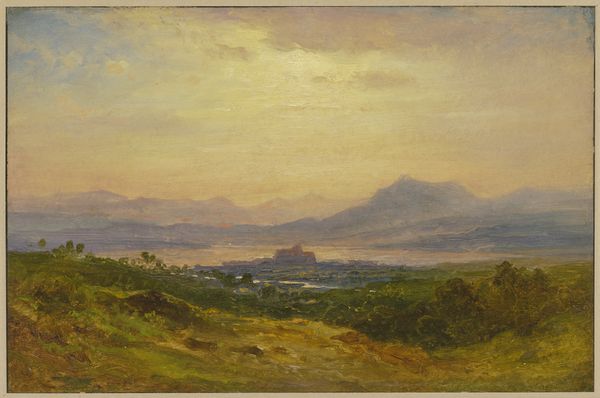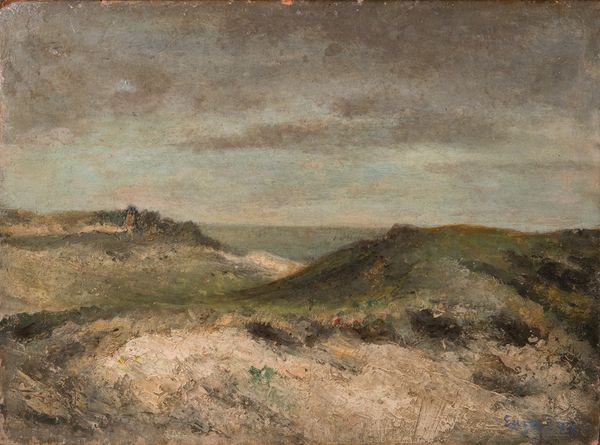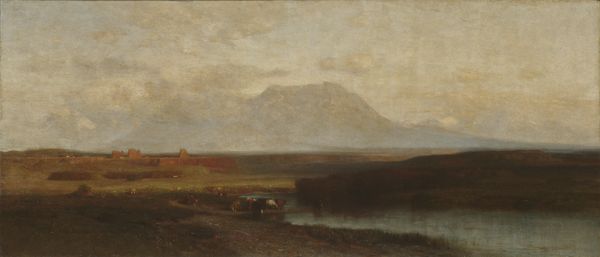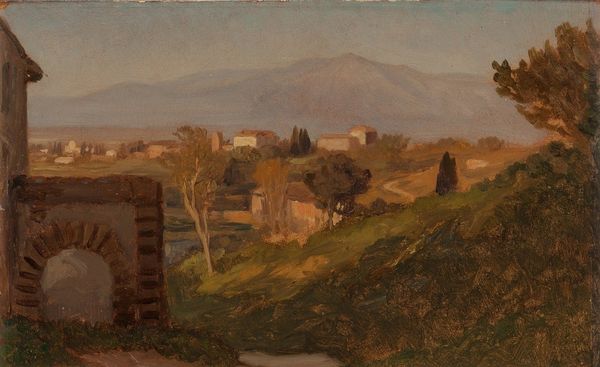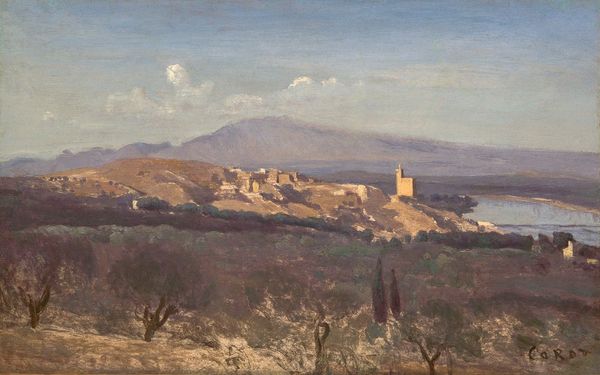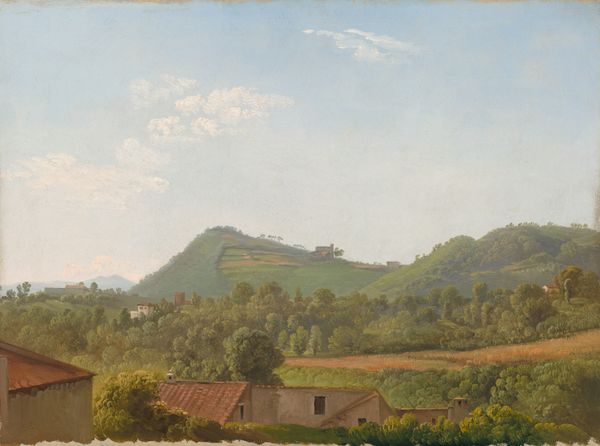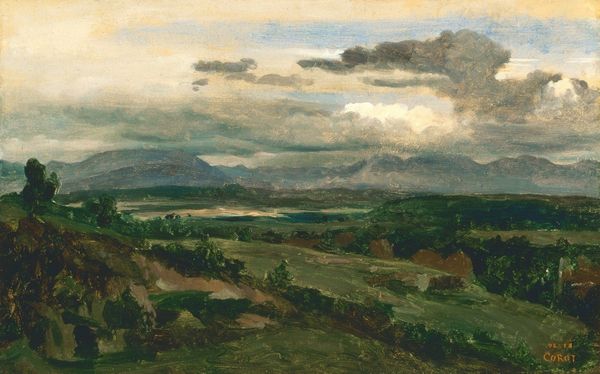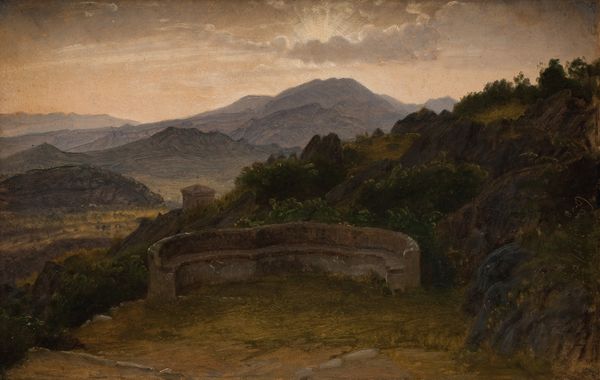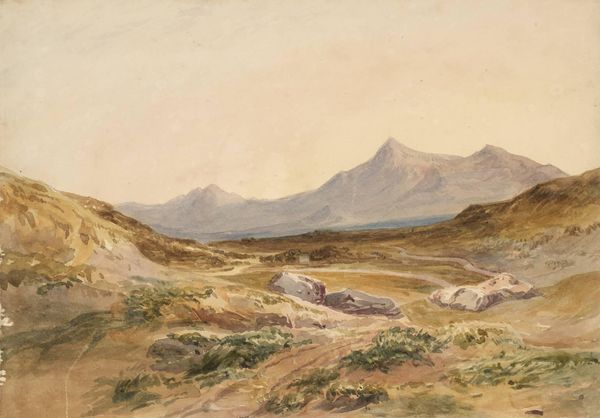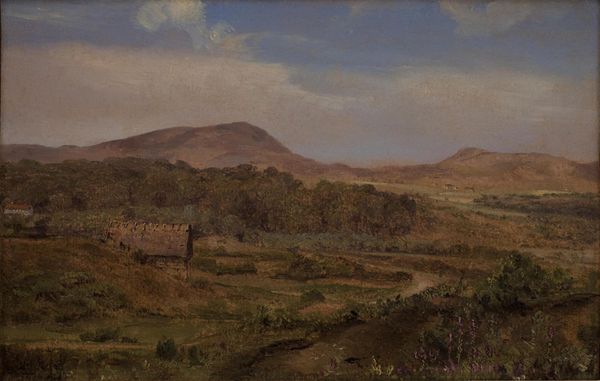
Dimensions: 13.34 x 26.04 cm
Copyright: Public domain
Curator: Heinrich Bürkel's oil painting, "View of the Monte Circeo," created in 1854, presents us with a seemingly idyllic Italian vista. What strikes you first about this work? Editor: The light. It's almost unsettlingly soft. There's a distinct atmospheric haze, and the palette feels muted, bordering on melancholic despite the scene's inherent beauty. Curator: That's a perceptive reading. The subdued color scheme, particularly the hazy sky, can be understood within the context of Romanticism, where landscapes were often used to evoke feelings of longing or the sublime. The geographical location also has resonance. Monte Circeo, steeped in classical mythology, can be interpreted as a site of cultural and historical significance. Circe’s presence evokes power, transformation, and the complexities of female identity, setting the landscape as more than scenic but symbolically charged. Editor: I can appreciate that. Yet, looking at the formal composition, note how Bürkel structures the planes—the foreground hillside is textured and relatively close, sharply contrasting the smooth expanse of the sea meeting a dissolving skyline and culminating with the ghostly, isolated shape of Circeo in the distance. It pulls the viewer's gaze deep into the space. This artistic strategy gives scale and importance to that distant form. Curator: Precisely, but consider how this echoes contemporary social themes as well. Bürkel, though associated with Realism, still utilizes elements that are symbolic to the narrative, highlighting not just visual accuracy but a narrative of space and place that directly touches social stratifications of his era—the burgeoning sense of cultural identity intertwined with historical narratives and personal journeys. What is emphasized and who populates these spaces is as critical as how these sites are depicted. Editor: Fair point. And when one focuses more attentively to the structures in the image, we notice how minutely Bürkel renders the architectural features of the buildings, set into nature like precious stones, reinforcing how his art draws upon elements from diverse styles while producing a composition which seems both effortless and deliberate. The visual cues all seem meticulously calculated, a balance that reflects great control over painterly effects. Curator: Overall, considering Bürkel's position within the rise of landscape painting as a genre capable of embodying cultural anxieties and aspirations, the painting’s seeming simplicity obscures how laden its various levels are with messages, giving insight into nineteenth-century society’s sense of space. Editor: Agreed, and beyond context, the painterly nature and formal control evident certainly enhance one’s encounter of viewing this picture—providing an example of how meticulous execution and conceptual intentions interact in order to construct a strong effect when viewing artworks in person or simply contemplating a good image online.
Comments
No comments
Be the first to comment and join the conversation on the ultimate creative platform.
